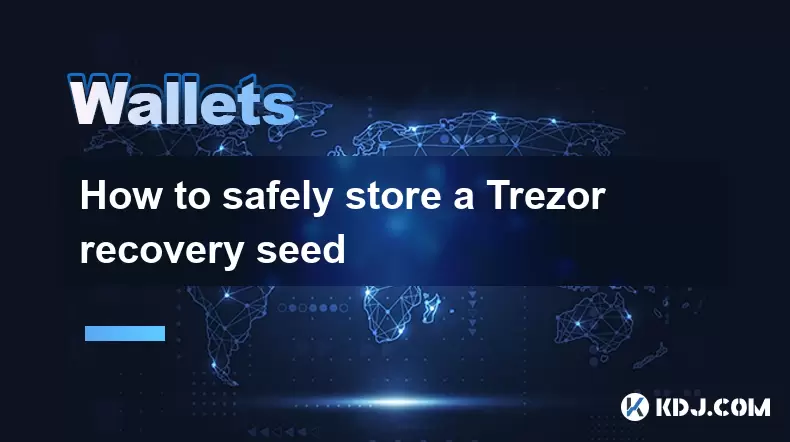-
 Bitcoin
Bitcoin $109,507.9823
0.43% -
 Ethereum
Ethereum $2,716.0274
3.79% -
 Tether USDt
Tether USDt $1.0003
-0.01% -
 XRP
XRP $2.3859
3.05% -
 BNB
BNB $665.2705
0.56% -
 Solana
Solana $154.6874
1.56% -
 USDC
USDC $1.0002
0.02% -
 TRON
TRON $0.2896
1.05% -
 Dogecoin
Dogecoin $0.1738
1.67% -
 Cardano
Cardano $0.6117
3.72% -
 Hyperliquid
Hyperliquid $40.3052
3.82% -
 Sui
Sui $2.9817
2.08% -
 Bitcoin Cash
Bitcoin Cash $505.0944
0.71% -
 Chainlink
Chainlink $14.0820
1.96% -
 Stellar
Stellar $0.2902
12.90% -
 UNUS SED LEO
UNUS SED LEO $9.0423
-0.34% -
 Avalanche
Avalanche $18.7084
1.54% -
 Hedera
Hedera $0.1714
6.33% -
 Shiba Inu
Shiba Inu $0.0...01218
2.48% -
 Toncoin
Toncoin $2.8261
1.24% -
 Litecoin
Litecoin $88.8228
1.59% -
 Monero
Monero $319.1344
2.71% -
 Polkadot
Polkadot $3.5479
2.69% -
 Dai
Dai $1.0001
0.00% -
 Ethena USDe
Ethena USDe $1.0010
0.06% -
 Uniswap
Uniswap $8.2690
6.49% -
 Bitget Token
Bitget Token $4.3622
1.19% -
 Aave
Aave $298.5989
2.11% -
 Pepe
Pepe $0.0...01042
1.97% -
 Pi
Pi $0.4663
1.15%
How to safely store a Trezor recovery seed
A Trezor recovery seed is a critical backup for your crypto, requiring secure, durable storage and strict confidentiality to prevent irreversible loss.
Jul 09, 2025 at 11:22 am

Understanding the Importance of a Trezor Recovery Seed
A Trezor recovery seed is a sequence of 12 or 24 words generated during the initial setup of your Trezor hardware wallet. These words act as the ultimate backup for your cryptocurrency holdings. If your device is lost, stolen, or damaged, the recovery seed allows you to regain access to your funds on another compatible wallet. The security of this seed phrase is paramount, and any compromise could result in irreversible loss of assets.
Unlike traditional passwords that can be reset, a recovery seed cannot be changed without reinitializing the wallet. This makes it critical to store it securely while ensuring it remains accessible when needed.
Physical Storage Options for Your Recovery Seed
Storing your Trezor recovery seed physically involves using materials that are resistant to fire, water, and wear over time. Common methods include:
- Metal plates: Engraving the seed onto stainless steel or titanium ensures durability against environmental damage.
- Paper backups: Writing the seed manually on acid-free paper and storing it in a safe environment is simple but less durable.
- Tamper-evident bags: Sealing the written seed in a sealed bag helps detect unauthorized access.
Each option comes with trade-offs between longevity, accessibility, and security. For example, while metal plates are highly resilient, they may be more expensive than paper alternatives.
Digital Storage: What You Should Avoid
Although digital storage might seem convenient, it introduces significant risks. Storing your recovery seed on a computer, smartphone, or cloud service exposes it to malware, hacking, or accidental deletion. Even encrypted files can be compromised if the encryption key is discovered or weak.
Some users attempt to store their seed in password managers or encrypted USB drives. However, these practices still pose risks because they rely on third-party software or devices that could fail or become obsolete over time.
Securing Multiple Copies of Your Recovery Seed
Creating multiple copies of your Trezor recovery seed increases redundancy and reduces the risk of losing access due to a single point of failure. It's advisable to keep at least two separate backups stored in different secure locations.
When creating duplicates, ensure that each copy is verified for accuracy. Any typo or omission in the word list will render the seed unusable. Consider distributing copies across:
- A home safe
- A safety deposit box at a bank
- Trusted family members' homes
Ensure that only people you trust absolutely have physical access to these backups.
Protecting Against Unauthorized Access
The confidentiality of your recovery seed must be treated with the same level of seriousness as the physical cash equivalent of your crypto holdings. Never share your seed with anyone, including customer support representatives, even under pressure or urgency.
Consider implementing additional protective measures such as:
- Passphrase protection (optional seed extension): Adding an extra layer of security by setting a passphrase known only to you. This feature turns your 12/24-word seed into a different wallet entirely if used consistently.
- Concealment techniques: Hiding backups in unexpected places or disguising them as unrelated items can prevent casual discovery.
Remember, the goal is to make it extremely difficult for others to find and use your recovery seed, while still allowing you to retrieve it quickly if necessary.
Frequently Asked Questions
Can I write my Trezor recovery seed on regular paper?
Yes, you can, but regular paper is prone to damage from moisture, fire, or tearing. Acid-free archival paper or waterproof, fire-resistant paper is strongly recommended for long-term reliability.
Is it safe to store my recovery seed in a safety deposit box?
Storing a copy in a safety deposit box is a good idea for added security. However, always maintain at least one other backup in case you lose access to the bank account or face restrictions on retrieving the box.
What should I do if I lose my Trezor recovery seed?
If you lose your recovery seed and your device becomes inaccessible, you will not be able to recover your funds. That’s why having multiple secure backups is essential. If your device is still functional, you can view the seed again through the wallet interface and create new backups.
Can I reuse a Trezor recovery seed on another wallet?
Yes, the recovery seed follows industry standards like BIP-39, so it can be imported into any compatible wallet. However, doing so means that both wallets will control the same funds, which could pose a security risk if either wallet is compromised.
Disclaimer:info@kdj.com
The information provided is not trading advice. kdj.com does not assume any responsibility for any investments made based on the information provided in this article. Cryptocurrencies are highly volatile and it is highly recommended that you invest with caution after thorough research!
If you believe that the content used on this website infringes your copyright, please contact us immediately (info@kdj.com) and we will delete it promptly.
- Pi Network: Powering the Global Economy and the Future with AI
- 2025-07-10 12:50:12
- Crypto Hack: GMX Bounty Offered After $42M Drain
- 2025-07-10 12:50:12
- Crypto Liquidations and Bitcoin's Wild Ride: What's Next?
- 2025-07-10 12:30:12
- Bitcoin Blasts to All-Time High: Is Institutional Momentum the Real Deal?
- 2025-07-10 13:10:12
- Bitcoin's Wild Ride: Record Highs and Price Surges Explained
- 2025-07-10 13:10:12
- Cloud Mining in 2025: Top Platforms for Passive Bitcoin & Altcoin Earnings
- 2025-07-10 13:15:11
Related knowledge

How to find a specific receiving address on my Trezor
Jul 09,2025 at 10:36pm
Understanding the Purpose of a Receiving AddressA receiving address is a unique identifier used in blockchain networks to receive cryptocurrency. Each...

How to connect Trezor to Rabby wallet
Jul 09,2025 at 05:49am
What Is Trezor and Rabby Wallet?Trezor is a hardware wallet developed by SatoshiLabs that allows users to securely store their cryptocurrency assets o...

Is it safe to use Trezor on a public computer
Jul 09,2025 at 08:56pm
Understanding the Risks of Using Trezor on a Public ComputerUsing a Trezor hardware wallet is generally considered one of the most secure methods for ...

What happens if I forget my Trezor passphrase
Jul 09,2025 at 03:15am
Understanding the Role of a Trezor PassphraseIf you use a Trezor hardware wallet, you may have set up a passphrase as an extra layer of security beyon...

How to stake Polkadot (DOT) with Trezor
Jul 09,2025 at 09:42pm
Understanding Polkadot (DOT) StakingStaking Polkadot (DOT) allows users to participate in network validation and earn rewards. Unlike traditional proo...

Can I reset a used or second-hand Trezor
Jul 09,2025 at 11:49am
Understanding the Reset Process for a Used or Second-Hand TrezorIf you have acquired a used or second-hand Trezor wallet, one of the first things you ...

How to find a specific receiving address on my Trezor
Jul 09,2025 at 10:36pm
Understanding the Purpose of a Receiving AddressA receiving address is a unique identifier used in blockchain networks to receive cryptocurrency. Each...

How to connect Trezor to Rabby wallet
Jul 09,2025 at 05:49am
What Is Trezor and Rabby Wallet?Trezor is a hardware wallet developed by SatoshiLabs that allows users to securely store their cryptocurrency assets o...

Is it safe to use Trezor on a public computer
Jul 09,2025 at 08:56pm
Understanding the Risks of Using Trezor on a Public ComputerUsing a Trezor hardware wallet is generally considered one of the most secure methods for ...

What happens if I forget my Trezor passphrase
Jul 09,2025 at 03:15am
Understanding the Role of a Trezor PassphraseIf you use a Trezor hardware wallet, you may have set up a passphrase as an extra layer of security beyon...

How to stake Polkadot (DOT) with Trezor
Jul 09,2025 at 09:42pm
Understanding Polkadot (DOT) StakingStaking Polkadot (DOT) allows users to participate in network validation and earn rewards. Unlike traditional proo...

Can I reset a used or second-hand Trezor
Jul 09,2025 at 11:49am
Understanding the Reset Process for a Used or Second-Hand TrezorIf you have acquired a used or second-hand Trezor wallet, one of the first things you ...
See all articles

























































































